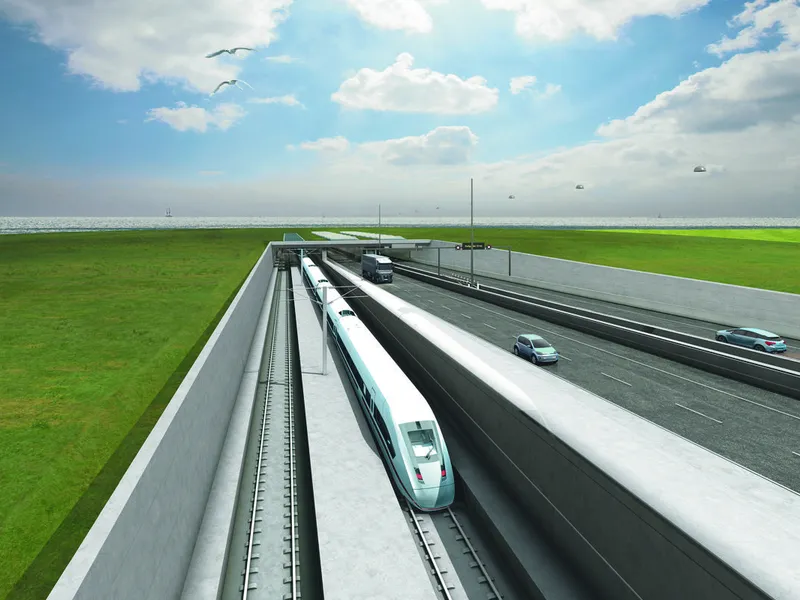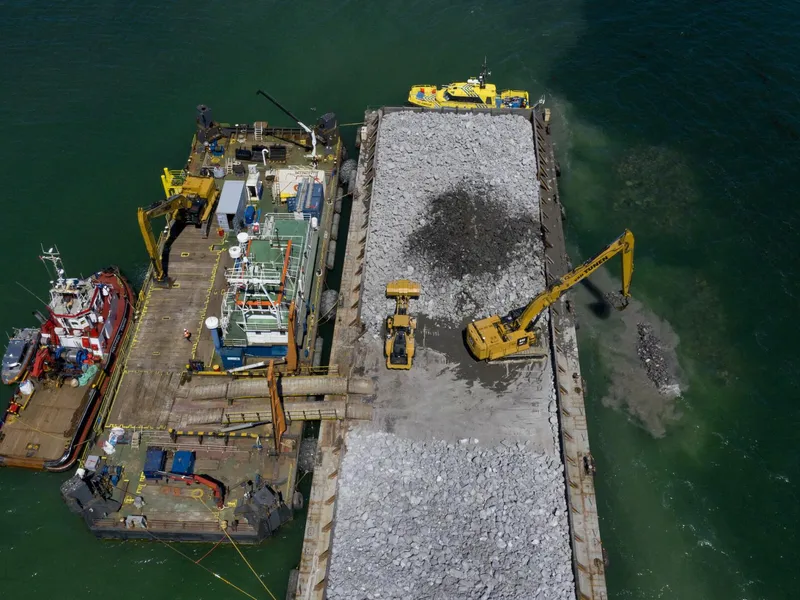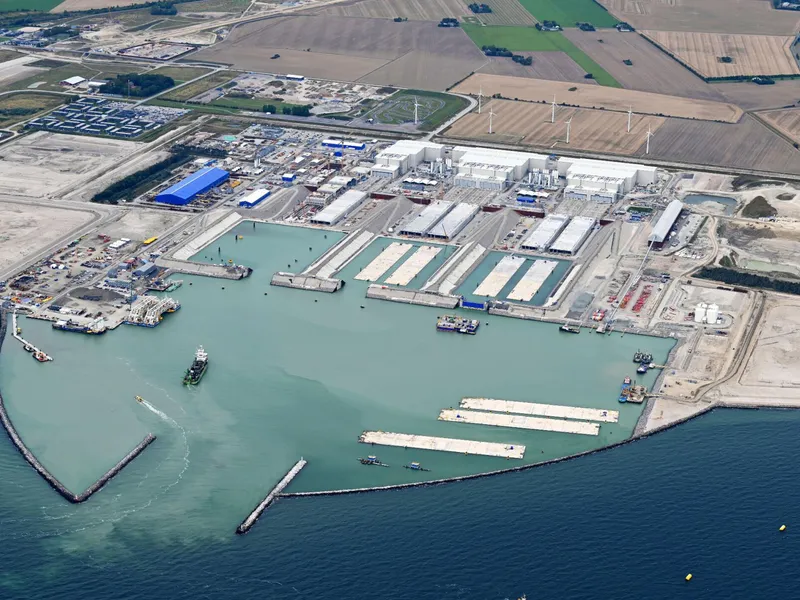Fehmarnbelt Tunnel and Railway Connection Project
Beskrivelse: Fehmarnbelt Tunnel and Railway Connection Project links Denmark and Germany via an 18 km immersed tunnel, producing 89 elements from 2021 to 2029; railway remains on schedule. Les mer ↧
Fase: Bygging
| Byggestart | 2021 |
| Ferdigstilles | 2029 |
Verdi og størrelse
86000 mill NOK
Hva skal bygges?
| Lengde tunnell | 18000 meter |
| Antall kjørebaner | 4 stk |

Miljøsertifiseringer
Ingen registrerte

Brannkonsept
Ingen registrerte
Aktører
 Arkitekt
Arkitekt
 Rådgivende ingeniør: 6 selskaper
Rådgivende ingeniør: 6 selskaper
 Totalentreprenør: Femern Link Contractors (FLC)
Totalentreprenør: Femern Link Contractors (FLC)
Klikk på aktørene for å se kontakter
Nøkkelord
Kontakt oss på olav@pekeberg.com for å løfte dine nøkkelord til toppen
Selskaper og personer
Det er 19 selskaper koblet til dette prosjektet.
Lag en bruker eller logg inn for se navn, telefonnummer og e-post adresse til selskapene og kontaktpersonene (f.eks. prosjektleder hos entreprenørene).
Bilder
Kart
Klikk for å se tegnforklaringer
Oppdateringer
21. Okt 2025
- Byggestart endret fra 2016 til 2021
- Prosjektverdi endret fra 45000 mill DKK til 86000 mill NOK
- RAMBØLL lagt til som Rådgivende ingeniør
- Arup lagt til som Rådgivende ingeniør
- Femern lagt til som Byggherre
- Per Aarsleff lagt til som Entreprenør
- VINCI Construction lagt til som Entreprenør
- Sund & Bælt Holding lagt til som Byggherre
- Femern Link Contractors (FLC) lagt til som Totalentreprenør
- BAM lagt til som Entreprenør
- Max Bögl lagt til som Entreprenør
- Design Joint Venture (DJV) lagt til som Rådgivende ingeniør
- TEC lagt til som Rådgivende ingeniør
18. Sep 2025
- Byggestart lagt til: 2016
- Mikkel Hemmingsen lagt til som Konsernsjef for Sund & Bælt
- Sund & Bælt lagt til som Byggherre
- IVY lagt til som Entreprenør
- Tyske myndigheter lagt til som Regulatorisk myndighet
18. Mai 2016
- Prosjektverdi lagt til: 45000 mill DKK
- Jens Villemoes lagt til som Pressesjef for Femern AS
- Cowi lagt til som Rådgivende ingeniør
- SWECO lagt til som Rådgivende ingeniør
- Ernst & Young lagt til som Uavhengig kontrollør
- Femern Link Contractors lagt til som Entreprenør
- Fehmarn Belt Contractors lagt til som Entreprenør
Byggekamera
Har dette prosjektet et byggekamera?
Send oss en link på olav@pekeberg.com,
så legger vi det til her.


 BuildPilot
BuildPilot












